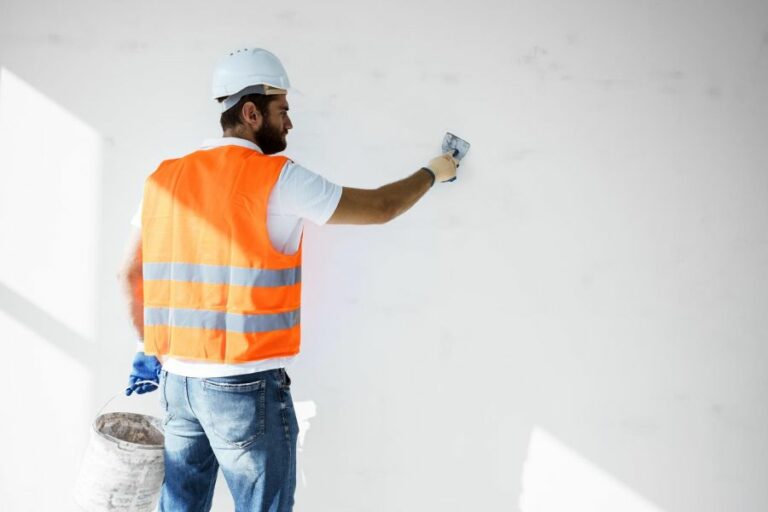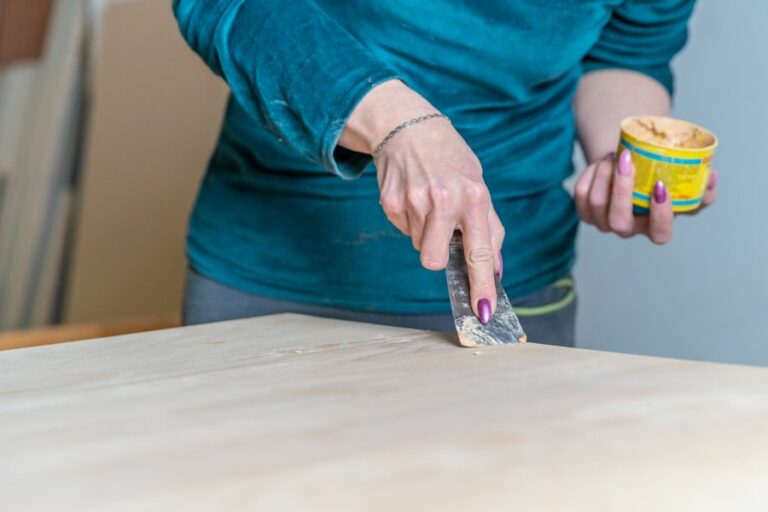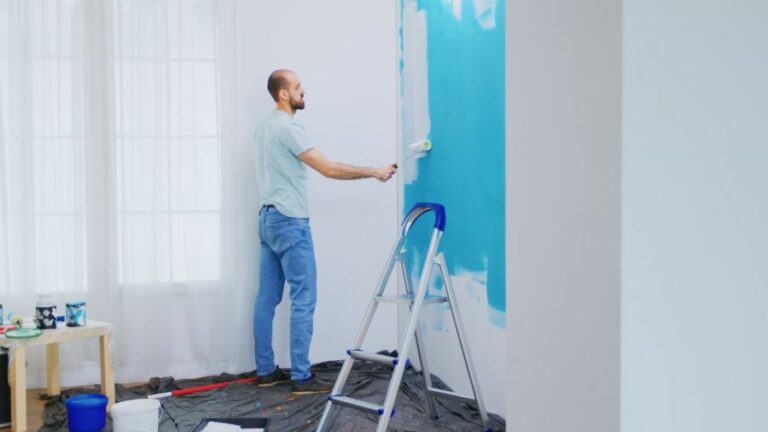Historic Property Surface Preservation Guide
Are you looking to preserve and protect the delicate surfaces on your historic property? Fear not, as we have crafted the perfect guide to help you maintain the charm and beauty of your valued estate. With years of experience dealing with historic properties and materials, we have accumulated the knowledge and techniques to provide the best possible care and preservation.
Historic property surface preservation guide:
Historic property surface preservation involves identifying materials, determining deterioration causes, and ensuring regular cleaning and maintenance. It is crucial to comply with local and national laws, use appropriate techniques, and consult preservation professionals when needed. Notable resources include the National Park Service and the Association for Preservation Technology International.

Want to delve deeper into historic property surface preservation? We’ve got you covered! Our comprehensive guide presents techniques, materials, and case studies that will help you conserve and restore the beauty of your cherished property. Keep reading and become an expert!
Contents
- 1 Guide to Preserving Historic Property Surfaces
- 2 Exploring the Four Methods of Historic Preservation
- 3 Key Techniques in Preserving Historic Structures
- 4 Evaluating the Cost-benefit of Old Building Preservation
- 4.1 • The Importance of Preserving Historic Architecture
- 4.2 • Economic Benefits of Preservation
- 4.3 • Old Buildings as Catalysts for Community Revitalization
- 4.4 • Preservation Challenges and Costs
- 4.5 • Assessing the Worth of Preservation Projects
- 4.6 • Recommendations for Successful Preservation Projects
- 5 The Debate: Preserving vs. Demolishing Old Buildings
- 6 Guidelines for Historic Building Preservation in the United States
- 6.1 • The Secretary of the Interior’s Standards for the Treatment of Historic Properties
- 6.2 • The Secretary of the Interior’s Guidelines for Preserving, Rehabilitating, Restoring, and Reconstructing Historic Buildings
- 6.3 • Perspectives from Personal Experience
- 6.4 • Preservation Resources and Networking
Guide to Preserving Historic Property Surfaces
• Introduction to Surface Preservation
Preserving historic properties is essential to honoring the architectural and cultural heritage of our past. For individuals tasked with maintaining these historic properties, a common challenge is surface preservation.
– Important Note on Historic Property Preservation
Before undertaking any surface preservation projects, it is crucial to ensure compliance with local and national laws and guidelines established for historic properties.
The National Park Service (managed by the U.S. Department of the Interior) offers useful guidelines for surface preservation projects.
• Identifying Surface Materials and Deterioration Causes
The first step in preserving historic properties is to identify the surface material and determine the causes of any deterioration. This will help to inform the most appropriate methods for preservation.
– Common Surface Materials
Historic properties are typically constructed using a variety of materials. Identifying the specific materials used in your property’s surfaces is vital for successful preservation. Some common materials include:
- Masonry (brick, stone, and concrete)
- Wood (siding, shingles, trim)
- Plaster and stucco
- Metal (cast iron, copper, steel, and aluminum)
- Paint and other surface coatings
– Causes of Deterioration
Deterioration of historic properties can be caused by numerous factors. These may include:
- Natural aging and environmental factors (such as sun and moisture exposure)
- Improper past repairs or interventions
- Incompatible materials or techniques used during maintenance
- Structural deficiencies
• Clean and Maintain Surfaces Regularly
One of the most essential steps in surface preservation is ensuring the regular cleaning and maintenance of your historic property’s surfaces. This process should be undertaken with care and according to the best practices for the specific material.
– Cleaning Techniques and Materials
When cleaning historic property surfaces, it is crucial to select materials and techniques appropriate for the surface in question. In general, using a gentle approach is recommended to avoid causing further damage. Some techniques and materials to consider include:
- Washing with water and gentle detergent
- Non-abrasive brushes designed for use on historic surfaces
- Vacuuming or dusting with soft brushes or microfiber cloths
- Steam cleaning (especially for masonry surfaces)
– Maintenance Tips and Recommendations
Proper maintenance is vital for the long-term preservation of your historic property’s surfaces. Consider the following recommendations:
- Inspect surfaces regularly for signs of damage or deterioration
- Address any structural issues that may contribute to surface deterioration
- Ensure proper drainage around the property to prevent water damage
- Repaint surfaces as required, using appropriate paint types and colors
- Consult with a preservation professional for guidance and advice when needed
• Repairing Surface Damage
When surface damage is identified, it is essential to take appropriate steps to repair the area. Again, this process requires careful consideration of the best practices for the material in question.
– Repair Considerations
Some factors to consider when repairing historic property surfaces include:
- Using compatible and historically accurate materials
- Utilizing techniques that do not damage or remove historic fabric
- Ensuring repairs are visually compatible with the existing surface
– Hiring Preservation Professionals
For complex or significant repairs, it is highly recommended to consult or hire a preservation professional with experience in surface preservation. This ensures that the repairs are carried out with expertise and will not compromise the historical integrity of the property.
• Additional Resources
For further information on surface preservation and maintenance, the following resources are recommended:
- National Park Service, The Secretary of the Interior’s Standards for the Treatment of Historic Properties: A comprehensive guideline for maintaining, repairing and replacing historic materials available at https://www.nps.gov/tps/standards.htm
- Association for Preservation Technology International (APT) https://www.apti.org/: A professional organization dedicated to promoting the best technology for conserving historic structures and sites.
- Historic England, Guide to Maintenance and Repair Techniques for Traditional Buildings: A helpful guide on maintenance and repair techniques, available at https://historicengland.org.uk/advice/your-home/
By following these guidelines and relying on expert advice, you can successfully preserve the historic surfaces of your property and contribute to the legacy of architectural and cultural heritage.
Exploring the Four Methods of Historic Preservation
Historic preservation is an essential practice to safeguard the cultural, historical, and architectural heritage of a community. Professionals in this field draw from diverse disciplines to identify, evaluate, conserve, and manage historic sites that hold significant value.
• Restoration: Returning to an Exact Period
A restoration is an approach that aims to depict a property as it appeared during a specific period in its history. This involves the removal of features from other periods and the careful reconstruction of missing historical elements.
This method is particularly suitable when a historic building’s significance lies in its historical information or unique architectural features.
As a historic preservation professional, I recommend adopting this approach only when there is sufficient documentation and physical evidence to guide the restoration process accurately.
Examples of successful restoration projects can be found in museums, historic house museums, and national historic sites, such as Mount Vernon, the home of George Washington.
• Rehabilitation: Adapting to Contemporary Use
Rehabilitation is a popular approach that aims to preserve and protect the historical value of a property while accommodating modern needs and uses.
This method involves making the necessary repairs, alterations, and modifications for the site to function efficiently without compromising its historic character.
Rehabilitation respects the building’s original design and materials while allowing for thoughtful contemporary adaptations. This approach is commonly used for commercial and residential buildings, where the goal is to balance historic preservation with functionality.
I recommend this method when there is a need to transform an underused or deteriorated site into a functional, economically viable, and energy-efficient space without altering its historical essence.
A well-documented example of rehabilitation is the adaptive reuse of New York City’s High Line, an abandoned railway transformed into a public park and green space.
• Reconstruction: Recreating a Lost Treasure
Reconstruction is the process of recreating a non-surviving historic property in its original form, materials, and location. This approach is suitable when there is a compelling public interest in the historic site or when the site’s particular significance is lost due to the absence of the structure.
Reconstruction projects require thorough research and documentation, as they should be based on reliable evidence from historical records, photographs, drawings, or archaeological findings.
As a preservation expert, I recommend this approach only when there is sufficient information available to ensure the accuracy of the reconstruction.
A notable example of a successful reconstruction project is Colonial Williamsburg in Virginia, a living history museum that recreates the 18th-century colonial capital.
• Preservation: Maintaining the Authenticity
Preservation, or “conservation,” is an approach that focuses on maintaining a historic property’s existing form, features, and materials.
This method emphasizes the stabilization, protection, and repair of the site rather than alteration or reconstruction. The primary goal is to preserve the property’s historical integrity and prevent any further deterioration.
I recommend this approach for sites that are in fair to good condition and possess significant historical or architectural value that should be retained.
Preservation tasks include regular inspection and maintenance, repairing damaged elements, and preventing future damages through protective measures.
A shining example of preservation is the Fallingwater, designed by Frank Lloyd Wright in Pennsylvania, which is maintained to preserve its original design and materials.
• Conclusion
In conclusion, the four approaches to historic preservation, Restoration, Rehabilitation, Reconstruction, and Preservation, offer different strategies to protect and enhance a given site’s historical, cultural, and architectural value.
Choosing the appropriate approach depends on the site’s significance, condition, available documentation, and intended use. When applied carefully and professionally, all these methods contribute to the successful safeguarding and celebration of our built heritage.
S.No | Approaches to Historic Preservation |
|---|---|
1 | Preservation |
2 | Rehabilitation |
3 | Restoration |
4 | Reconstruction |
Key Techniques in Preserving Historic Structures
Historic preservation is an important aspect of maintaining and protecting our cultural heritage. By preserving and restoring historic structures, we are able to learn from our past and continue to share these valuable resources with future generations.
• Documentation and Research
Before undertaking any preservation work, it is crucial to thoroughly document and research the structure in question. This may include historical records, architectural drawings, photographs, and other archival materials.
Information about the building’s original design, alterations, and contextual relationship with its surroundings helps preservationists make informed decisions about the most appropriate preservation treatments.
A valuable resource for documentation and research includes the Library of Congress’ Historic American Buildings Survey (HABS) website, which provides valuable information about historic structures throughout the United States.
• Stabilization
When dealing with deteriorating or damaged structures, stabilization is the first priority. This process involves addressing structural issues such as weakened walls, sagging roofs, or cracked foundations.
Stabilization ensures that the building won’t collapse, protecting both its historical integrity and the safety of those working on or near the site.
Various techniques are employed, such as temporary shoring or bracing, repairing or replacing damaged elements, and addressing moisture issues that may be causing damage.
• Preservation
Preservation focuses on maintaining the existing form, features, and materials of a historic structure while preventing and minimizing any further deterioration. Some key preservation techniques include:
– Regular maintenance
Regular maintenance is essential for preserving the integrity of historic structures. This may include tasks such as cleaning gutters, painting, or replacing worn roofing materials, which help prevent moisture damage and other issues that can accelerate deterioration.
– Protective coatings and treatments
Certain materials, such as metals, masonry, or wood, require protective coatings and treatments to prevent deterioration from environmental factors.
These treatments may include anti-graffiti coatings, water repellents, or materials designed to seal and protect surfaces from moisture, UV damage, and pollutants.
– Weatherization
Improving energy efficiency in historic structures is often necessary and can be achieved through weatherization techniques such as adding insulation, caulking, or upgrading windows and doors.
However, it is important to ensure that these alterations do not negatively impact the building’s historic character.
• Restoration
Restoration involves returning a historic structure to its appearance at a particular point in time, often by removing later additions and revealing or reconstructing original features. Techniques and methods may include:
– Material repair or replacement
Deteriorated or damaged materials can be repaired or replaced with materials that closely match the original in appearance, texture, and composition. For example, if a section of molding is missing, a skilled artisan can recreate the molding to match the existing historic elements.
– Paint and finish analysis
Analysis of paint and finish layers can help reveal the original color schemes of a building, which can then be replicated as part of the restoration process. This may involve physical analysis of paint samples or consulting historical records and photographs.
– Reconstructing missing features
In some cases, historical features may be missing or have been significantly altered. Where sufficient historical evidence exists, these features can be reconstructed, often by referencing architectural drawings, photographs, or similar buildings from the same time period.
• Adaptive reuse
Adaptive reuse involves repurposing historic structures for new uses while retaining their historic character. This strategy not only preserves the building but also keeps it economically viable and relevant to contemporary needs.
Some examples of adaptive reuse may include converting a mill into housing, a warehouse into a commercial space, or a church into an arts center.
• Sensitive additions
Sometimes, it is necessary to add new elements to a historic structure to meet modern needs or code requirements. These additions should be carefully designed and executed to minimize their impact on the historic character of a building. Key design considerations include placement, size, materials, and detailing.
In conclusion, historic preservation encompasses a variety of techniques and strategies aimed at preserving, rehabilitating, or restoring historic structures. Each technique should be carefully considered and applied as appropriate for the specific building and its context.
By employing these methods, we can continue to enjoy and learn from the rich architectural heritage that these structures represent.
Technique | Description |
|---|---|
Documentation | Recording a building’s history, architectural features, and condition through research, photography, and measured drawings. |
Preservation | Maintaining a building’s existing form and condition through routine maintenance and repairs. |
Rehabilitation | Adapting a historic building for a new use while preserving significant architectural features and the overall character of the building. |
Restoration | Returning a building to its appearance and condition at a specific time in its history, while removing later additions and alterations. |
Reconstruction | Recreating a vanished or non-surviving historic building, often using traditional building materials and techniques. |
Adaptive Reuse | Converting a historic building for a new purpose or function, while preserving its architectural and historical significance. |
Evaluating the Cost-benefit of Old Building Preservation
• The Importance of Preserving Historic Architecture
Before diving into the specifics of whether preserving old buildings is worth the money, it is essential to understand the significance of historic architecture. Old buildings serve as tangible connections to the past and provide insights into the history and culture of a region.
Furthermore, historic architecture contributes to a community’s identity and plays a key role in fostering a sense of belonging amongst its residents.
According to the National Trust for Historic Preservation, preserving old buildings can also be advantageous for the environment.
The greenest buildings are often the ones that have already been built, and restoring existing structures can greatly reduce the consumption of materials and resources involved in new construction projects.
• Economic Benefits of Preservation
Historic preservation can have substantial economic payoffs. For instance, studies have shown that restored old buildings promote tourism, with many international and domestic tourists expressing their interest in visiting historical sites.
Consequently, these visitors stimulate the local economy and create job opportunities.
Moreover, preservation projects often involve local labor and materials, thus supporting regional economies and boosting small businesses.
Additionally, the rehabilitation of old buildings has been known to increase property values in the area, contributing to the overall economic health of a community.
– Tax Credits and Incentives
Governments around the world offer various tax incentives and grants to encourage the restoration of old buildings. In the United States, for example, historic preservation tax credits are available to property owners who undertake certified rehabilitation projects on historic structures.
These financial incentives can significantly offset preservation costs and make rehabilitation projects more feasible.
• Old Buildings as Catalysts for Community Revitalization
Preserving historic structures can serve as a catalyst for community revitalization and growth. Numerous examples across the globe showcase how well-planned preservation projects have breathed new life into entire neighborhoods.
A great example is the Lowertown Historic District in St. Paul, Minnesota. This area experienced a dramatic transformation from a declining industrial district to a vibrant mixed-use neighborhood. All made possible through the preservation of its historic buildings.
– Adaptive Reuse: New Purposes for Old Buildings
Repurposing old buildings through adaptive reuse can be a highly sustainable and cost-effective approach to meeting modern needs.
Adaptive reuse entails the repurposing and reimagining of existing structures for new functions and is an excellent way of preserving historic architecture while addressing contemporary requirements.
Examples of successful adaptive reuse projects include old warehouses being converted into residential lofts and former schools transitioning into community centers. This not only promotes the sustainable use of resources but also creates unique, character-filled spaces that can bring a community together.
• Preservation Challenges and Costs
Despite the many benefits of preserving old buildings, there can be significant challenges related to these endeavors. The costliest aspect of preservation projects is often achieving compliance with modern building code requirements.
Ensuring that a historic structure meets contemporary standards for safety, accessibility, and energy efficiency can be a complex and expensive process.
Additionally, historic preservation can be a time-consuming endeavor that requires specific expertise and extensive research. Property owners must often work closely with local, regional, and national experts to ensure that the rehabilitation project adheres to preservation guidelines and integrity.
• Assessing the Worth of Preservation Projects
Given the various financial, environmental, and cultural benefits of preserving old buildings, one could argue that it is, in most cases, worth the money.
However, each preservation project should be evaluated on an individual basis, considering factors such as building condition, potential economic impact, and community attachment to the structure.
In some cases, the cost of restoring a historic building might outweigh the potential benefits, although these instances are generally rare.
Ultimately, preserving old buildings can positively impact the environment, local economies, and the cultural fabric of a community, making such investments worthwhile endeavors.
• Recommendations for Successful Preservation Projects
When considering the preservation of an old building, the following recommendations can be helpful:
- Conduct thorough research: Developing a comprehensive understanding of the building’s history, architectural style, and potential rehabilitation challenges is essential before embarking on a preservation project.
- Engage stakeholders early: Collaborating with local government authorities, preservation agencies, and the community can be crucial to identify shared goals and garnering support for the project.
- Evaluate possible funding sources: Research available financial incentives, grants, and tax credits that may be applicable to offset preservation costs.
- Consider adaptive reuse: Explore creative ways to repurpose older buildings for modern needs while respecting their historic character.
- Seek professional guidance: Engage the services of expert preservation architects, historians, and planners to ensure the project is conducted in accordance with recognized guidelines and standards.
In conclusion, preserving old buildings can be a highly valuable investment for various reasons. Despite potential challenges and costs, the economic, environmental, and cultural benefits associated with historic preservation often outweigh the expenses.
Taking the recommended steps can lead to successful preservation projects that contribute to a community’s character and prosperity for generations to come.
The Debate: Preserving vs. Demolishing Old Buildings
• The Importance of Preserving Heritage Buildings
Preserving heritage buildings is essential for maintaining a connection to our history, culture, and the unique identity of a place.
These structures provide a tangible link to the past, helping us to better understand, learn from, and appreciate the lives and stories of the generations that preceded us.
Moreover, the architectural beauty and craftsmanship found in these buildings often contribute to the aesthetic and overall appeal of a city or neighborhood. The National Trust for Historic Preservation is a prominent organization that supports the protection and preservation of significant historic sites.
– Economic Benefits of Preservation
Preserving old buildings can have numerous economic advantages. When restored and repurposed, such structures can attract visitors and serve as cultural landmarks, boosting local tourism.
In addition, the process of restoring and maintaining these buildings often creates jobs and encourages investment in the surrounding area, contributing to the overall economic vitality of a neighborhood or city.
– Environmental Advantages of Preserving Old Buildings
From an environmental perspective, preserving and repurposing old structures is far more sustainable than demolishing them and constructing new ones.
The “greenest building is one that is already built,” as the saying goes. Retrofitting an existing building is usually less resource-intensive than constructing a new one, which generally requires a significant amount of raw materials and energy.
In this context, preserving historic buildings aligns with society’s growing emphasis on sustainability and reducing our environmental impact.
• The Case for Demolishing Old Buildings
While there are clear benefits to preserving historic structures, there are occasions when demolishing such buildings may be necessary or even beneficial.
– Safety Concerns
Older buildings may pose health and safety hazards due to outdated building codes, the presence of hazardous materials (such as asbestos or lead paint), or structural problems.
In such cases, it may be both safer and more cost-effective to demolish the building and replace it with a new, code-compliant structure.
Moreover, in areas prone to natural disasters, some older buildings might not meet the required standards for seismic activity or storm resilience.
Consequently, these structures could pose a significant risk to their occupants, and demolition might be the most responsible course of action.
– Functional Obsolescence and Economic Viability
Over time, some buildings may become functionally obsolete, no longer meeting the needs of modern users. For example, older buildings may have inadequate parking facilities, insufficient energy efficiency, or insufficient digital infrastructure. In such cases, the cost of upgrading the building may outweigh the benefits of preservation, making demolition the more economically viable choice.
Additionally, if a historic building has deteriorated beyond repair or its maintenance costs exceed its potential return on investment, it may not make financial sense to preserve it. Such circumstances could justifiably warrant demolition in favor of more profitable and sustainable development.
• Striking a Balance: Preservation and Adaptive Reuse
In many cases, it’s possible to find a compromise between preservation and demolition. Adaptive reuse is an approach that involves repurposing historic buildings to serve a new function while preserving and celebrating their architectural and historical significance.
Examples of successful adaptive reuse projects include converting old factories into mixed-use developments, transforming churches into community centers, or rehabilitating historic schools into residences.
However, adaptive reuse requires creativity, careful planning, and collaboration between developers, architects, government agencies, and preservationists.
Developing appropriate building codes and regulations that support and encourage adaptive reuse can help strike a balance between preservation and development.
• Recommendations for Balancing Preservation and Development
From my experience, I recommend the following approaches to ensure that old buildings are evaluated appropriately, and the right decision is made regarding their preservation or demolition:
- Comprehensive assessment: Conduct a thorough evaluation of the building’s structural integrity, safety, and functional feasibility. Engage historical experts, structural engineers, and other professionals to determine any risks and potential solutions for preservation.
- Public engagement: Encourage community involvement in the decision-making process. Seek input and feedback from residents, business owners, and other stakeholders who may be affected by the preservation or demolition of a historic structure. Include their perspectives in the final decision.
- Consider adaptive reuse: Explore creative ways to repurpose historic buildings while respecting their original character and architectural heritage. Promote collaborations between preservationists, developers, and architects to develop innovative and sensitive solutions.
- Implement thoughtful policies and regulations: Establish clear, equitable, and flexible guidelines for deciding when to preserve or demolish old buildings. Ensure that these policies are applied consistently and take into account the multiple factors inherent in preservation-versus-development decisions.
In conclusion, the decision to preserve or demolish an old building requires careful consideration of several factors, from economic viability and safety concerns to historical significance and community impact.
By conducting comprehensive assessments, promoting public engagement, considering adaptive reuse, and implementing thoughtful policies, we can achieve the delicate balance between preserving our built heritage and fostering sustainable development for the future.
Guidelines for Historic Building Preservation in the United States
Preserving historic buildings in the United States is a significant aspect of maintaining and celebrating the country’s cultural heritage. To ensure proper and consistent preservation, several guidelines have been established to guide those involved in the process.
• The Secretary of the Interior’s Standards for the Treatment of Historic Properties
The primary set of guidelines governing the preservation of historic buildings in America is called The Secretary of the Interior’s Standards for the Treatment of Historic Properties.
Developed by the U.S. Department of the Interior, these Standards provide a framework for decision-making when it comes to preserving, rehabilitating, restoring, or reconstructing historic properties.
Adherence to these Standards ensures that the historical significance and physical integrity of a property are maintained. They consist of ten general principles that must be followed while working on historic buildings.
– The Ten Principles
- Preserve historic materials and features.
- Protect and maintain historic materials and features.
- Use appropriate treatments in the least invasive manner possible.
- Preserve significant changes that have acquired historical importance over time.
- Preserve distinctive materials, craftsmanship, and examples of skilled work.
- Repair historic materials and features rather than replace them.
- Replace missing or deteriorated historic materials and features only when necessary.
- Use accurate documentation for any necessary replacements.
- Seek expert advice when uncertain about the appropriate treatment.
- Maintain the historic character of a property when making alterations or additions.
• The Secretary of the Interior’s Guidelines for Preserving, Rehabilitating, Restoring, and Reconstructing Historic Buildings
In addition to the Standards, the Secretary of the Interior’s Guidelines provide more specific guidance on how to apply the Standards to different types of historic properties. These Guidelines are organized into four treatment approaches:
- Preservation: Focusing on the maintenance and stabilization of existing historic materials and features.
- Rehabilitation: Adapting a historic property for compatible contemporary use while preserving its significant materials, features, and spaces.
- Restoration: Accurately depicting the form, features, and character of a property as it appeared at a specific period in its history.
- Reconstruction: Recreating vanished or non-surviving portions of a property based on accurate documentation.
Each treatment should be chosen based on the intended use of the property, its significance, and existing condition. A careful assessment of the property and potential impacts of each treatment should be conducted before making a decision.
• Perspectives from Personal Experience
As a preservation professional, I believe that integrating the Secretary of the Interior’s Standards and Guidelines into every preservation project greatly contributes to the successful conservation of important historic properties.
Based on my experience, here are some recommendations for respected industry experts and community members:
- Stay informed and updated on the latest best practices and preservation techniques.
- Attend training and workshops to deepen your understanding of the Standards and Guidelines.
- Collaborate with local preservation organizations, such as Preservation Action, to learn from the expertise of others and build a strong community support system.
- Engage with the wider public to raise awareness and appreciation for the importance of preserving historic buildings.
• Preservation Resources and Networking
Several organizations and resources can provide valuable information and support for preservation efforts in the United States. Some of the most prominent include:
- National Park Service: Offers a variety of resources and technical assistance for preserving historic properties.
- National Trust for Historic Preservation: Advocates for the preservation of historic sites and offers funding, resources, and support for communities.
- National Alliance of Preservation Commissions: Provides support and training to local preservation commissions and advocates for preservation policies at the national level.
By understanding and applying the guidelines and principles governing the preservation of historic buildings in America, we can contribute to the continued celebration of our nation’s rich cultural heritage and architectural legacy.







